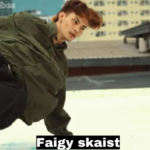Throughout human history, the image of the fire-breathing dragon has ignited the imagination of countless cultures. These mythical creatures have captivated minds, representing both destructive and protective forces. Among various types of dragons, fire dragons are perhaps the most iconic, associated with immense power, transformation, and fearsome beauty. From ancient myths to contemporary literature and film, fire dragons continue to be a symbol of awe, terror, and fascination.
This article delves into the mythological origins of fire dragons, their symbolic significance across different cultures, and how they have become an enduring part of modern popular culture. We will also explore their representation in art, literature, and entertainment, and the ways fire dragons continue to influence modern storytelling.
The Origins of Fire Dragons in Mythology
Fire Dragons in Eastern Mythology
In Eastern cultures, particularly in Chinese mythology, dragons hold a revered place as benevolent and powerful creatures. Unlike their Western counterparts, Chinese dragons are often associated with rain, fertility, and protection. However, among the many types of dragons in Chinese lore, fire dragons stand out for their unique attributes.
The fire dragon is one of the celestial animals in the Chinese zodiac, appearing every 60 years. Those born in the year of the fire dragon are said to be powerful, charismatic, and natural leaders, but they can also be temperamental and intense. Fire dragons in Chinese mythology are associated with the summer season, the direction south, and the element of fire itself—symbolizing energy, passion, and destruction.
In addition to the zodiac, fire dragons appear in numerous folktales and legends. These dragons are often portrayed as creatures capable of summoning firestorms or controlling volcanic eruptions. They represent the balance between creation and destruction, a force that can bring both life (by promoting growth through fire-cleared lands) and death (through their destructive flames).
Fire Dragons in Western Mythology
In contrast, fire-breathing dragons in Western mythology are often depicted as fearsome beasts to be conquered. These dragons represent chaos, greed, and destruction, guarding treasure hoards and terrorizing villages. The most well-known fire-breathing dragon in Western lore is Smaug from J.R.R. Tolkien’s The Hobbit. Smaug, like many Western dragons, is depicted as a greedy and malevolent creature whose breath can incinerate everything in its path.
The origin of fire dragons in Western mythology can be traced back to Norse and Celtic legends. In Norse mythology, the fire dragon Fáfnir was once a dwarf who transformed into a dragon to guard his ill-gotten treasure. Fáfnir’s destructive nature is a common trait of fire dragons in the West, symbolizing uncontrolled power and greed.
In Celtic mythology, fire dragons are also tied to nature’s destructive forces. They are seen as guardians of sacred knowledge and treasures, but their fiery breath symbolizes the thin line between protection and destruction. Fire dragons in these myths are often slain by heroic figures, further emphasizing their role as antagonists representing chaos that must be subdued.
The Symbolism of Fire Dragons
Fire dragons are deeply symbolic across cultures, representing a variety of themes depending on the context. Their ability to breathe fire—one of nature’s most powerful elements—gives them a unique place in mythology and symbolism.
1. Power and Strength
One of the most obvious symbols associated with fire dragons is power. The ability to wield fire, an element both destructive and transformative, makes these creatures a representation of raw, untamed strength. In many stories, the fire dragon is the ultimate adversary, a challenge that only the bravest or most powerful heroes can face.
2. Transformation and Rebirth
Fire has long been associated with transformation, particularly in its ability to purify and renew. Just as fire clears land for new growth, fire dragons can symbolize the destruction of the old to make way for the new. This idea is particularly prominent in Eastern mythologies, where fire dragons are seen as part of the natural order, promoting balance through both creation and destruction.
3. Chaos and Destruction
Fire dragons also embody chaos and destruction. Their flames can raze cities and forests, making them symbols of uncontrollable and unpredictable forces. In this light, fire dragons are often seen as creatures of chaos, threatening order and stability. This is particularly true in Western mythologies, where dragons are frequently portrayed as antagonists to be defeated to restore peace.
4. Protection and Guardianship
Interestingly, fire dragons are not always destructive. In many cultures, dragons are seen as protectors or guardians of treasures, knowledge, or sacred spaces. The fire dragon’s fierce power makes it a formidable guardian, ensuring that only the worthy can pass through or obtain what it guards. This duality of protection and destruction is what makes fire dragons such compelling figures in mythology.
Fire Dragons in Modern Pop Culture
The fire dragon’s enduring appeal has made it a central figure in modern fantasy literature, film, and video games. These creatures continue to fascinate audiences with their powerful presence and complex symbolism, making them ideal for various narrative purposes.
1. Fire Dragons in Fantasy Literature
Fantasy literature has long embraced the image of the fire-breathing dragon. As mentioned earlier, J.R.R. Tolkien’s Smaug from The Hobbit is one of the most iconic examples of a fire dragon in modern literature. Smaug’s intelligence, greed, and destructive power make him a formidable antagonist, and his fiery breath is a key element in his menace.
Other notable examples include the dragons of Westeros from George R.R. Martin’s A Song of Ice and Fire series. The dragons in this series, particularly Drogon, are depicted as symbols of power and destruction. They play a crucial role in shaping the political landscape of the story, with their ability to breathe fire acting as a decisive advantage in battle.
2. Fire Dragons in Film and TV
Fire dragons have also made a significant impact on film and television. In the Harry Potter series, Norbert, a Norwegian Ridgeback dragon, is known for its ability to breathe fire, while Hungarian Horntails, one of the most dangerous dragon species in the series, also exhibit this trait. These dragons are often portrayed as dangerous creatures, but they also add an element of wonder and excitement to the magical world.
In Game of Thrones, the dragons are central to the plot’s development, with their fire-breathing capabilities making them a critical weapon of war. The breathtaking scenes of dragons unleashing fire upon armies and cities are some of the most visually iconic moments in the show, reinforcing the immense power and destructive potential of fire dragons.
3. Fire Dragons in Video Games
Fire dragons are a staple in the world of video games, often appearing as boss enemies or powerful allies. In The Elder Scrolls V: Skyrim, dragons play a central role, with many of them possessing the ability to breathe fire. Players must use their skills to defeat these fire-breathing creatures in epic battles, adding a layer of challenge and excitement to the game.
In games like Dragon Age and World of Warcraft, fire dragons are often depicted as ancient, powerful beings that players must defeat to progress. Their fire-breathing ability makes them particularly dangerous foes, and their presence in these games highlights their continued popularity in modern fantasy storytelling.
Fire Dragons in Art and Popular Culture
The image of the fire dragon is not limited to literature and entertainment; it has also inspired countless works of art. Artists across different mediums have used the fire dragon as a subject, creating stunning representations of these mythical creatures.
1. Fire Dragons in Visual Art
Fire dragons have been depicted in everything from classical paintings to modern digital art. Artists often focus on the dragon’s fiery breath, using bold colors like reds, oranges, and yellows to capture the heat and power of the flames. The contrast between the dragon’s scales and the fire it breathes creates striking imagery that appeals to fantasy lovers and art enthusiasts alike.
In some Eastern traditions, fire dragons are depicted as more serpentine creatures, winding through clouds with flames trailing behind them. These representations are often more peaceful, emphasizing the dragon’s role as a force of nature rather than a destructive beast.
2. Fire Dragons in Tattoos and Fashion
The fire dragon is also a popular subject in tattoo art, where it symbolizes strength, protection, and transformation. Many people choose fire dragon tattoos to represent their resilience and ability to overcome obstacles. The intricate details of dragon scales, wings, and flames make for stunning designs that have a deep personal significance to the wearer.
In fashion, fire dragons have appeared in various forms, from graphic T-shirts to high-end runway collections. The dragon’s fierce and powerful imagery resonates with audiences, making it a popular motif in clothing and accessories.
Fire Dragons and the Future of Mythology
As our society continues to evolve, the image of the fire dragon shows no signs of fading. These mythical creatures have been a part of human culture for centuries, and they continue to adapt and evolve with new generations of storytellers, artists, and creators. Whether they appear as antagonists or symbols of power, fire dragons remain one of the most compelling creatures in myth and modern culture.
1. Fire Dragons in Virtual and Augmented Reality
With the rise of virtual and augmented reality, fire dragons are now finding new forms of expression. In immersive VR games and experiences, users can encounter fire dragons in ways never before possible—whether it’s battling them in epic combat or exploring their mythical worlds. As technology advances, the presence of fire dragons in interactive media is likely to become even more prominent.
2. The Role of Fire Dragons in Modern Storytelling
Fire dragons will undoubtedly continue to play a vital role in modern storytelling. Their symbolism as forces of power, destruction, and transformation remains relevant in today’s narratives, where themes of conflict, renewal, and the balance of power are ever-present. Whether in literature, film, or games, fire dragons will continue to captivate and inspire.
Conclusion
The fire dragon, with its fiery breath and immense power, has long been a symbol of strength, chaos, and transformation. From its roots in ancient mythology to its role in modern popular culture, the fire dragon continues to be a source of fascination for storytellers, artists, and audiences alike. Whether feared as a destructive force or revered as a protector, the fire dragon’s legacy endures, proving that these mythical creatures are as timeless as the flames they breathe.








